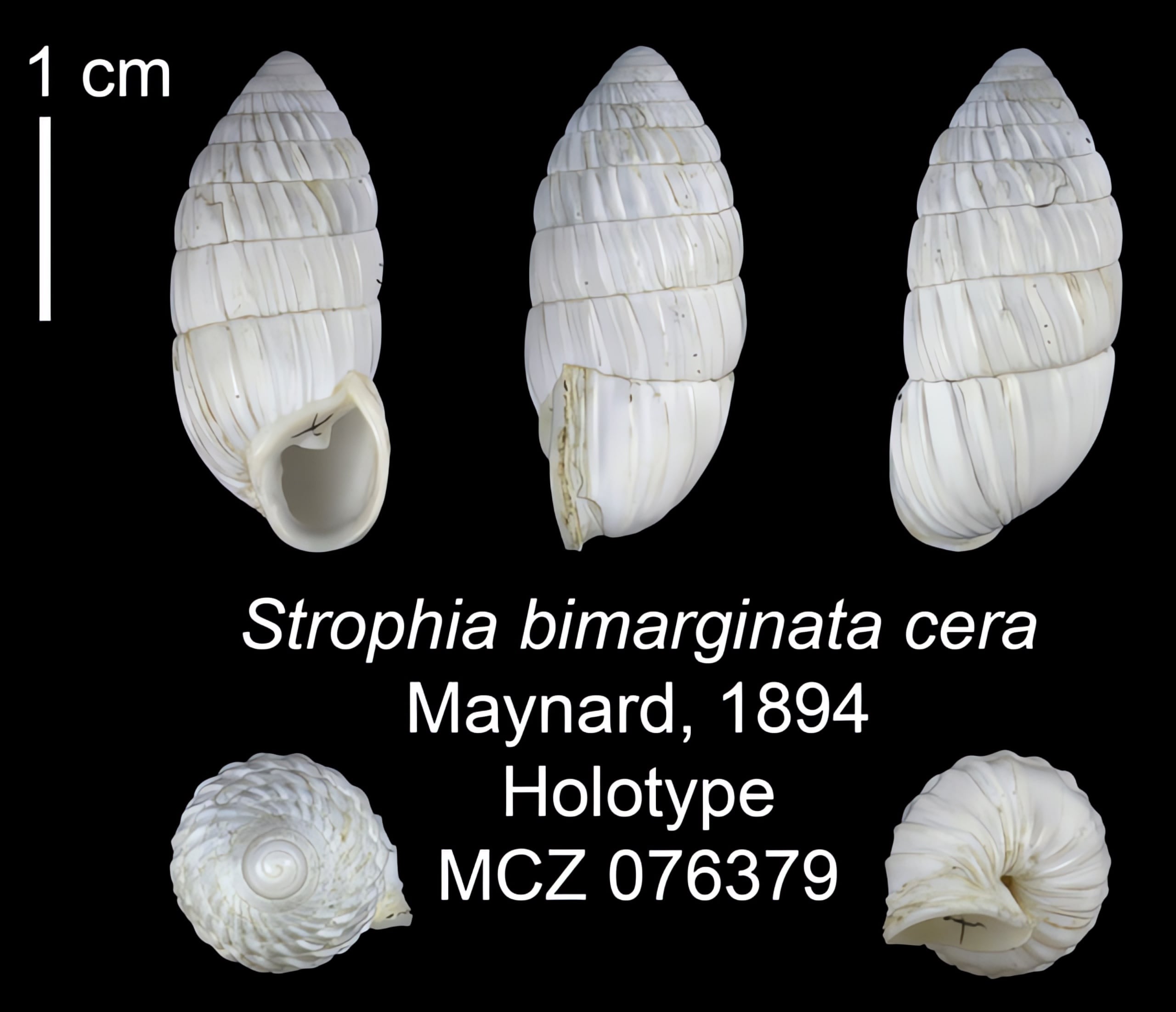"STROPHIA BIMARGINATA CERA. Novo.
�Waxy Strophia.
�Fig. 54. A, front view, B, margin, of type.
�DESCRIPTION.
� SP. CH. Size, medium. Shell, thin and light. Striations,
�present. Whirls, ten. Examined nine specimens.
� Form of shell, a pointed cylinder, with the first three whirls equal in diameter, then the shell slopes to a moderately acute point, forming an angle of sixty-two degrees. The striations are not numerous, twenty to the first whirl, they are narrower than the interspaces between them, regular, and somewhat broken, but smoothed on top, not arranged in lines, and are slightly inclined from right to left. The spaces between them are narrow, with one or two distinct lines or ridges of growth.
� Aperture, rather small, arched, but open, and inclined to be rounded. Lower tooth, prominent, inclined to be double, about .03 high, wider than high, and about twice as long as wide, is slightly elevated, and placed in a central position and back not quite once its length from the frontal bar. The upper tooth is represented by a mere tubercle.
� Margin, not produced forward quite as far as the diameter of the shell, is about twice as thick as the shell behind it and is smoothly rounded, with the sides slightly furrowed with lines of growth. The frontal bar is quite well developed and protrudes a little beyond the striations.
� Color of shell, externally and internally, is a beautiful waxy white, without tinting or marking of any kind.
�DIMENSIONS.
� Size of type, 1.00 by .40. Largest specimen, 1.07 by .47
�smallest, .97 by .45. Greatest diameter, .47; smallest, .40. Longest
�specimen, 1.07; shortest, .97.
�OBSERVATIONS.
� Individual variation, on one hand, is toward the parent stock, S.
�marginata, the margin being wide, but never double, and the interior slightly tinted with very pale brown, and on the other hand, toward specimens with a thinner margin, showing no lines of growth and a single small tooth as beautifully white in color as in the type.
� There is a singular resemblance between this sub-species and Strophia curtissii nivia in color and somewhat in form, but S. b. cera is larger, with a smaller aperture, more widely apart striations, with lines of growth between. From all other Strophias this sub-species may be distinguished by the peculiar waxy color and thin shell, which is nearly as translucent as white wax, insomuch so that the animal may be seen through it.
�HABITS AND DlSTRIBCTION.
� The few specimens of this fine Strophia which I obtained were
�taken from trees or bushes on Green Key."



